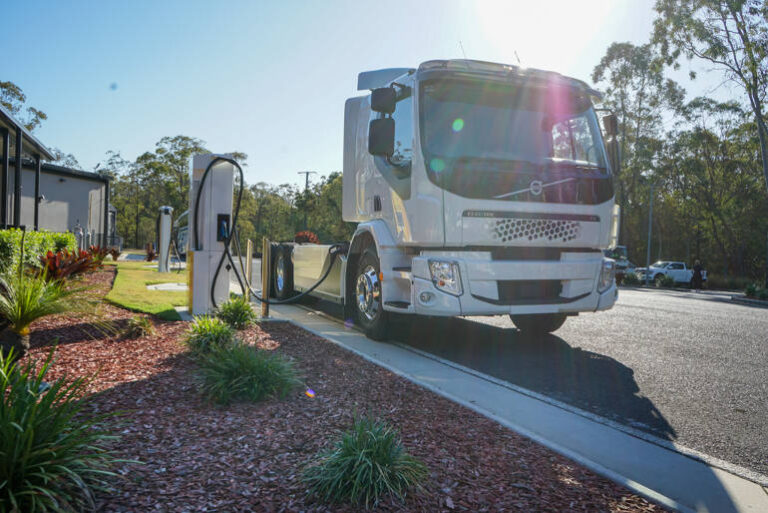Australia’s EV revolution is in full swing, with an expanding array of passenger car, SUV, and even van models hitting the road. However, electric trucks are experiencing a more gradual rollout, with only a handful of options available so far.
The transport sector is projected to be Australia’s top emitter by 2030, with fleet operators facing growing pressure to decarbonise. However, the electrification of heavy vehicle fleets comes with unique challenges.
Take for instance the vast distances our interstate and even intrastate trucks travel on a daily basis, often on remote stretches of road. Then there’s the general lack of electric vehicle charging infrastructure, compared to parts of Europe, Asia and the U.S.
Yet, manufacturers and tech innovators are proactively developing zero-emission solutions, resulting in light, medium, and heavy-duty electric trucks operating in major cities around the country and charging infrastructure that is improving at a rate of watts.
Most of the major manufacturers are testing or selling electric trucks around the world, but only a small number of them offer working models here in Australia. Here’s a look at the electric trucks you can buy now, from city-friendly last-mile models to long-range highway haulers.
Foton
Foton Mobility Distribution (FMD) has topped the electric truck sales ladder since it launched the light-duty T5 EV locally in 2023, and is showing no signs of slowing down.
The T5 is available in both 4.5 and 6-tonne GVM configurations, aimed at back-to-base delivery work with a range of around 180km when fully loaded.
Powered by a 115kW electric motor, with an 81.4kWh battery providing charge, the T5 manages a top speed of 95km/h. But at around 2,470kg – it’s also light by electric truck standards, which means more payload up back.
The T5 was a success out of the gate, explains FMD General Manager of Light Vehicles, Bill Gillespie. He puts much of its popularity down to the unique benefits it offers, like a car-licence suitable GVM and 3500kg braked towing capacity, which other electric truck competitors couldn’t offer at the time.
“We had the 4.5-tonne GVM, which a lot of companies haven’t been able to bring here, and that’s the biggest segment of the light truck market,” he said.
“You can also put a tipper body on and upgrade it to six tonnes, you can have a Pantech or a refrigerator body, even an alloy tray, making it very versatile. It can also tow 3.5 tonnes, with a GCM of eight tonnes.
“So, we had a car-licence truck, out of the box, for the last-mile companies in Australia.”
The last-mile delivery game is ruled by major retailers who handle their own urban freight task, with Woolworths now the largest last-mile delivery operator in Australia – operating 1,200 trucks in its home delivery fleet.
This made the supermarket giant a prime target for Foton, and it turns out the T5 was an ideal fit with Woolworths pushing to transition 100 percent of its 1200 strong fleet of home delivery trucks to electric by 2030.
“That truck worked for them from day one, so the refrigerated body went on and we delivered 25 straight up,” Mr Gillespie said.
“It did the job straight away and they’re now at 62 or 63 trucks. They are doing a great job for them.”
Mr Gillespie also told Fleet HV News that the company plans to introduce larger electric truck models ranging from 8.5- to 18-tonne GVM, but timing is still under wraps.
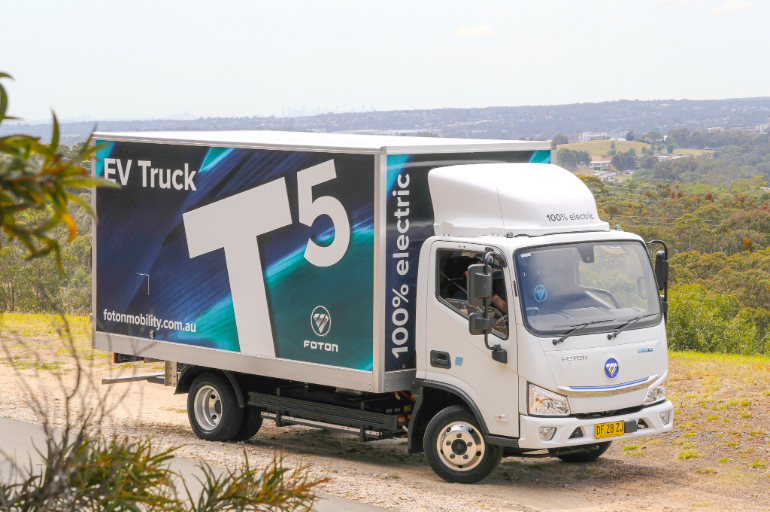
Fuso eCanter
Since launching globally in 2017, Fuso’s eCanter has amassed around eight million kilometres, a distance equivalent to travelling the circumference of Earth 200 times, making it a well-proven electric option.
After arriving in Australia in 2021, the first generation eCanter found its way into major fleets like Bunnings, Goldstar, Linfox, Australia Post, Team Global Express and Centurion.
Then the second-generation eCanter landed last year, with no fewer than 14 model variants available to cover all bases, ranging from a car-licence suitable 4.5-tonne GVM right up to an 8.5-tonne GVM.
The new model utilises Daimler Truck e-axle technology, simplifying the driveline and improving packaging of batteries and other components, much like its larger Mercedes-Benz siblings.
A liquid-cooled electric motor runs through a single-speed reduction gearbox, producing 110kW of power and 430Nm of torque, while a modular battery concept allows the use of one, two or three 41.3kWh batteries offering a range of between 200km and 300km. Fast charging is also possible, allowing the eCanter to go from 5 per cent to 90 per cent in around 45 minutes.
Double wishbone independent front suspension and electro-hydraulic rack and pinion steering, combined with a low centre of gravity, makes for a more car-like driving experience than ever before. At least, we thought so when we tested it recently.
Where the eCanter really outshines its competition is in its full suite of advanced safety systems, which include acoustic vehicle alert system, high voltage shut off crash sensors, advanced brake assist with pedestrian detection, active side guard assist, lane departure warning and stability control assist.
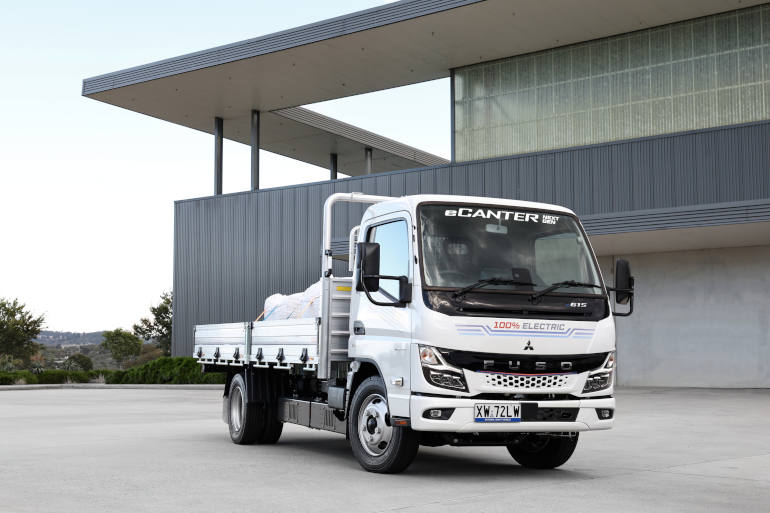
Mercedes-Benz
Daimler Truck Australia launched its local electric truck range last year, consisting of the aforementioned second-gen Fuso eCanter, Mercedes-Benz eActros and eEconic.
On the heavy end, the Mercedes-Benz eActros 300 is available as a 4×2 and 6×2 rigid as well as a 4×2 prime mover with both models suited to local distribution duties, while the eEconic is available as a 6×2 and is aimed primarily at the refuse industry.
The eActros 300 is powered by an e-axle producing a maximum 400kW of peak power, fed by three lithium-ion batteries totalling 336kWh, good for a range of up to 300km when loaded – depending on the configuration.
Good news for the refuse industry, Mercedes-Benz also offers an electric version of its waste collection model – the eEconic 300. This model features the same electric driveline as the eActros 300, with a range of around 200km.
The truckmaker’s latest electric halo truck is the eActros 600, although it’s not yet available in Australia. The eActros 600 features an 800-volt e-axle and produces a peak output of 600kW, fed by a three-battery setup totalling 621kWh. The result? A range of 500km, but with fast-charging capabilities Mercedes-Benz is confident operators will be able to travel up to 1000km per day.
Daimler Truck Australia has suggested it will test the model in Australia this year, to assess its viability Down Under.
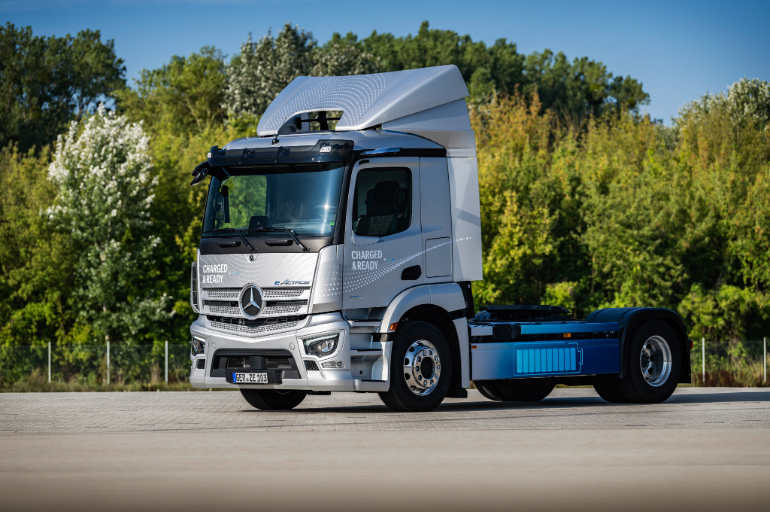
Volvo
Volvo was first to the medium- and heavy-duty electric truck party, delivering the first road-going models to Geodis in February, 2023. Since then, the Swedish manufacturer has continued to roll out electric models, now offering the most comprehensive range of any manufacturer locally.
The first on the scene were the FE and FL Electric medium-duty models, available in GVM options ranging from 16,000kg to 27,000kg.
On the smaller side, the FL is powered by a single electric motor producing 130kW, with a choice of three or four batteries offering a combined output ranging from 280kWh to 375kWh, capable of travelling up to 450km on a single charge.
Stepping up, the FE is equipped with a dual-motor system producing up to 225kW, fed by a choice of three or four batteries offering a combined output ranging from 280kWh to 375kWh, good for a range of up to 275km.
At the larger end of town, the FM Electric offers a heavy-duty urban solution with a GCM of up to 50,000kg. It’s powered by three electric motors producing a combined 490kW and can carry either five or six battery packs totalling between 450kWh and 540kWh, for a range of up to 300km. An extreme-duty FMX Electric variant is also available, suitable for construction work.
The top-dog is Volvo’s FH Electric prime mover, with a GCM of up to 50,000kg, available with a range of cab options. The FH is powered by three motors that produce a total of 490kW, fed by up to six battery packs totalling 540kWh, capable of travelling up to 300km. Like its diesel counterpart, the electric FH range is topped by the FH Aero – a variant that features an even more efficient cab design.
So confident is Volvo in its electric lineup, that it plans to build the zero-emission models at its Wacol plant in Queensland from 2027.
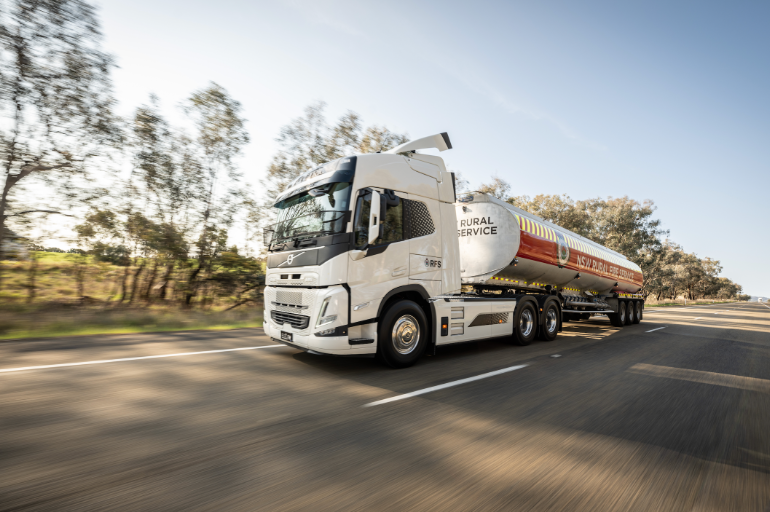
Scania
Scania might be known for hulking V8s with enough torque to turn the earth, but the Swedish manufacturer also produces battery-electric trucks and its heavy-duty rigid model is available locally right now.
The Scania 25P is a 4×2 rigid with a GVM of 16,000kg, powered by a mid-mounted electric motor producing maximum outputs of 295kW/2200nm. The 25P features either five batteries totalling 165kWh, or nine batteries totalling 300kWh, allowing for a driving range of up to 250km.
A number of these trucks are operating in mining environments around the country, but the 25P is a road-going, work-ready rigid option to complement the brand’s diesel models.
We suspect Scania will also bring its R and S series electric prime mover models to Australia in the near future. The R and S series electric models, which are available now in Europe, can be configured with up to 728kWh of battery capacity and a power rating of up to 450kW.
Impressively, Scania offers its heavy-duty electric prime movers with a GCM of up to 64,000kg and at that weight they’ll still achieve a range of around 375km with the big 728kWh battery setup, or 600km with more modest 29,000kg GCM.
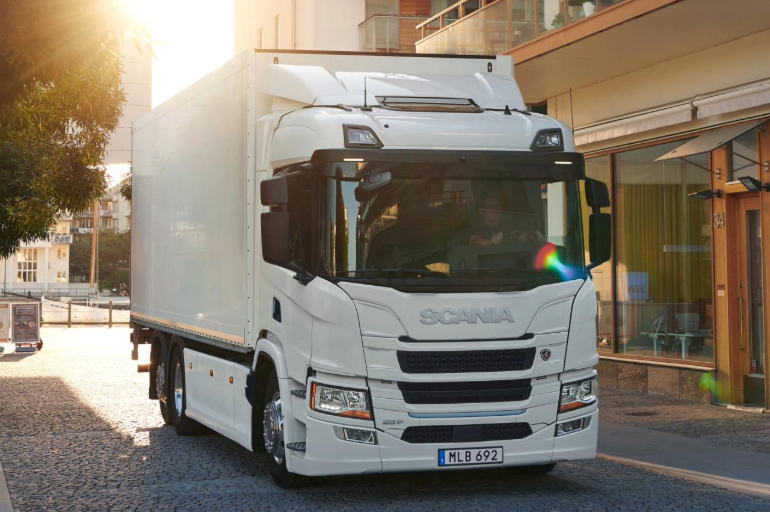
Hyundai
Hyundai offers its light-duty MIGHTY Electric truck in Australia, presenting a zero-emission version of the its diesel MIGHTY, launching locally back in 2023.
The Mighty Electric produces 120kW of power and 320Nm of instant torque, fed by a 114.5kWh battery that provides a range of up to 200km when fully loaded.
Fast-charging capability allows the truck to be charged from eight per cent to 100 per cent in around 71 minutes, but the good news for fleet operators is that Hyundai claims a 20-minute charge will provide a further 100km of range.
According to Hyundai, it is also exploring the possibility of bringing the larger Xcient Fuel Cell prime mover to Australia – currently available in New Zealand.
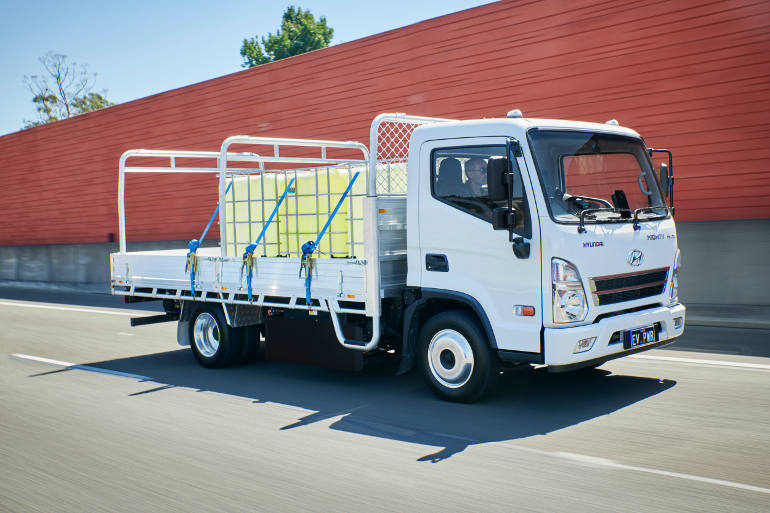
While there are only a handful of electric truck options available in Australia, the number of models on offer is steadily growing. Key manufacturers are all trialling, or have launched electric models into select markets, so while the Australia might not be at the top of their list – the electric wave is coming.


